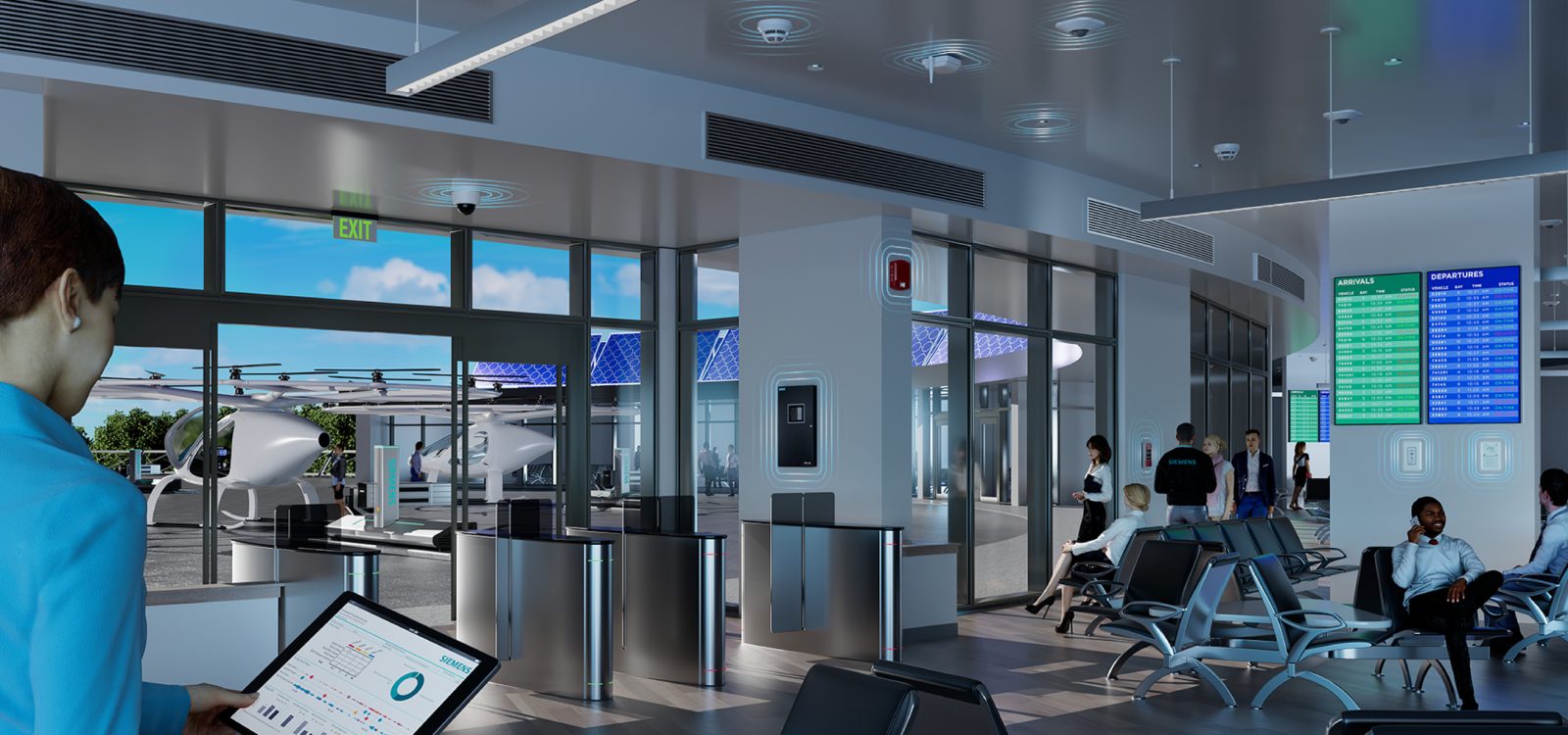
German technology giant Siemens is partnering up with California startup Skyway to research and develop electrical supplies and infrastructure needed to power global vertiports soon expected to facilitate flights of electric takeoff and landing (eVTOL) vehicles like air taxis.
Siemens announced it is teaming up with San Francisco Bay Area-based Skyway to determine the kinds of electricity and digital demands vertiports will require to handle both passenger eVTOL flights and smaller craft like delivery drones. As part of that, the partners will be looking to identify sustainable sources of energy to provide sufficient power needed; develop a “system of systems” to orchestrate the different computer-driven functionalities of such facilities; and establish a standardized vehicle charging process for next-generation aircraft terminals around the world.
Read: Study questions air taxi cost structures, passenger prices
The companies are looking to develop those infrastructure and operational resources in time for the introduction of air taxi services expected in just a couple years. In doing so, they hope to configure them in a way that allows for rapid scaling across the globe as battery-powered aerial services proliferate.
Although much smaller and younger than the mighty Siemens, Skyway has already accumulated considerable knowledge and skill in airspace mission planning and management, air traffic navigation, and uncrewed eVTOL aircraft operations. Its German corporation partner, meanwhile, will contribute its deep experience in infrastructure electrification, vehicle charging, and the production and maintenance of operational systems of various kinds of facilities.
The duo will pool their respective backgrounds and activities to develop standardized vertiport design, planning, and charging technologies boasting efficiencies capable of reducing the overall draw on renewable electricity sources they’ll adopt.
“Sustainable energy solutions will be the foundation and the necessity for adoption of Urban Air Mobility with the electrification of eVTOL aircraft,” said Skyway CEO Clifford Cruz. “Combining our companies’ resources and industry foresight can influence vertiport construction efforts and general UAM solutions on an industry-wide scale, while setting a new precedent for modern transportation.”
Read: REGENT deepens Siemens ties in AAM seaglider development
Although smaller startups like Skyway have thus far been the driving forces and main innovators in developing next-generation eVTOL aircraft and vertiport conception, Siemens views the partnership as an ideal way to deepen its involvement in surging UAM activity.
“It is exciting for Siemens to contribute to the evolution of the Urban Air Mobility Industry,” said John Kasuda, head of airports at Siemens Smart Infrastructure North America. “The development and efficient operations of vertiports will require innovative solutions to meet the expected demands of fast aircraft turnaround times and a network of varying landing facilities.”
FTC: We use income earning auto affiliate links. More.



Comments